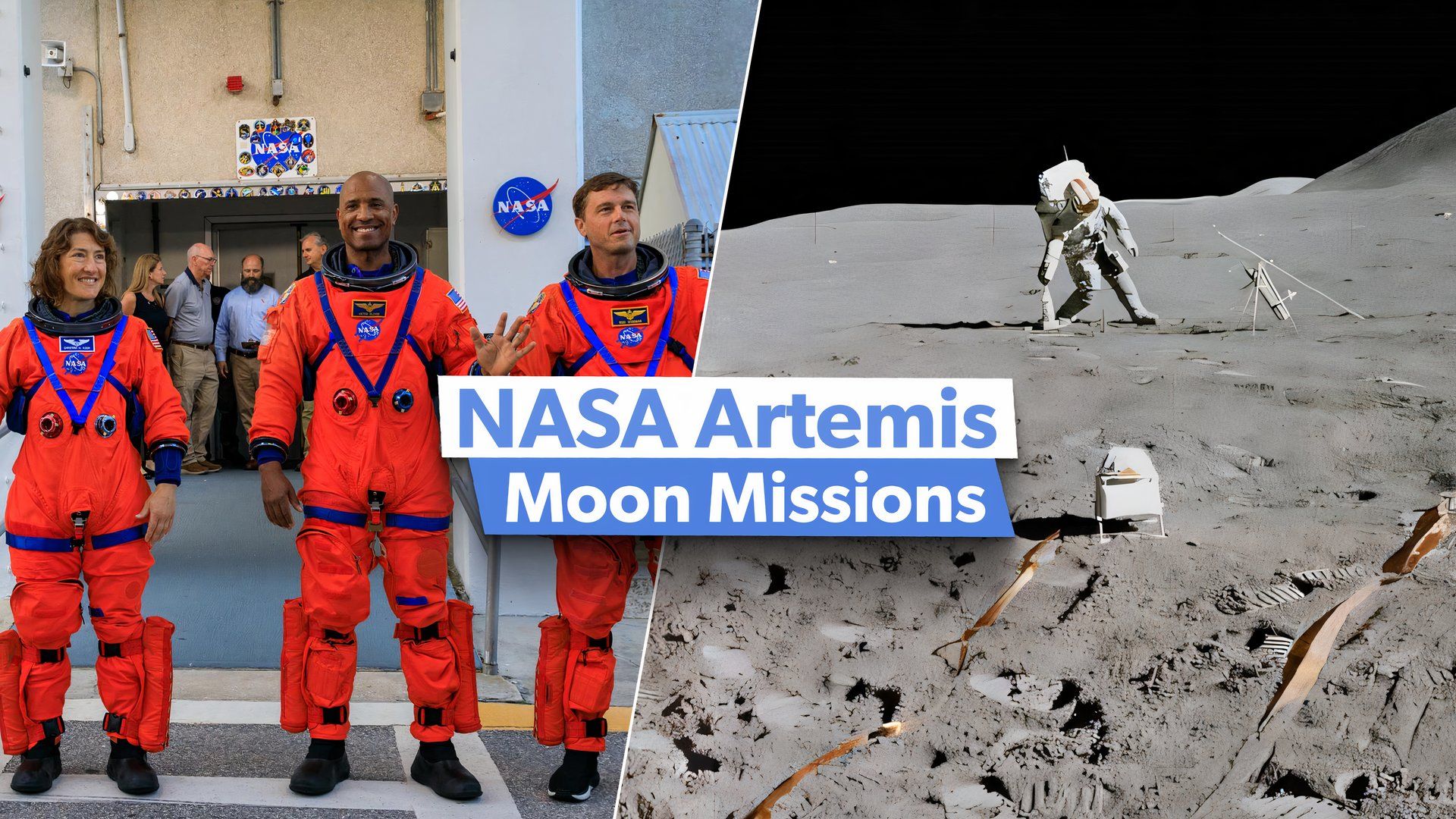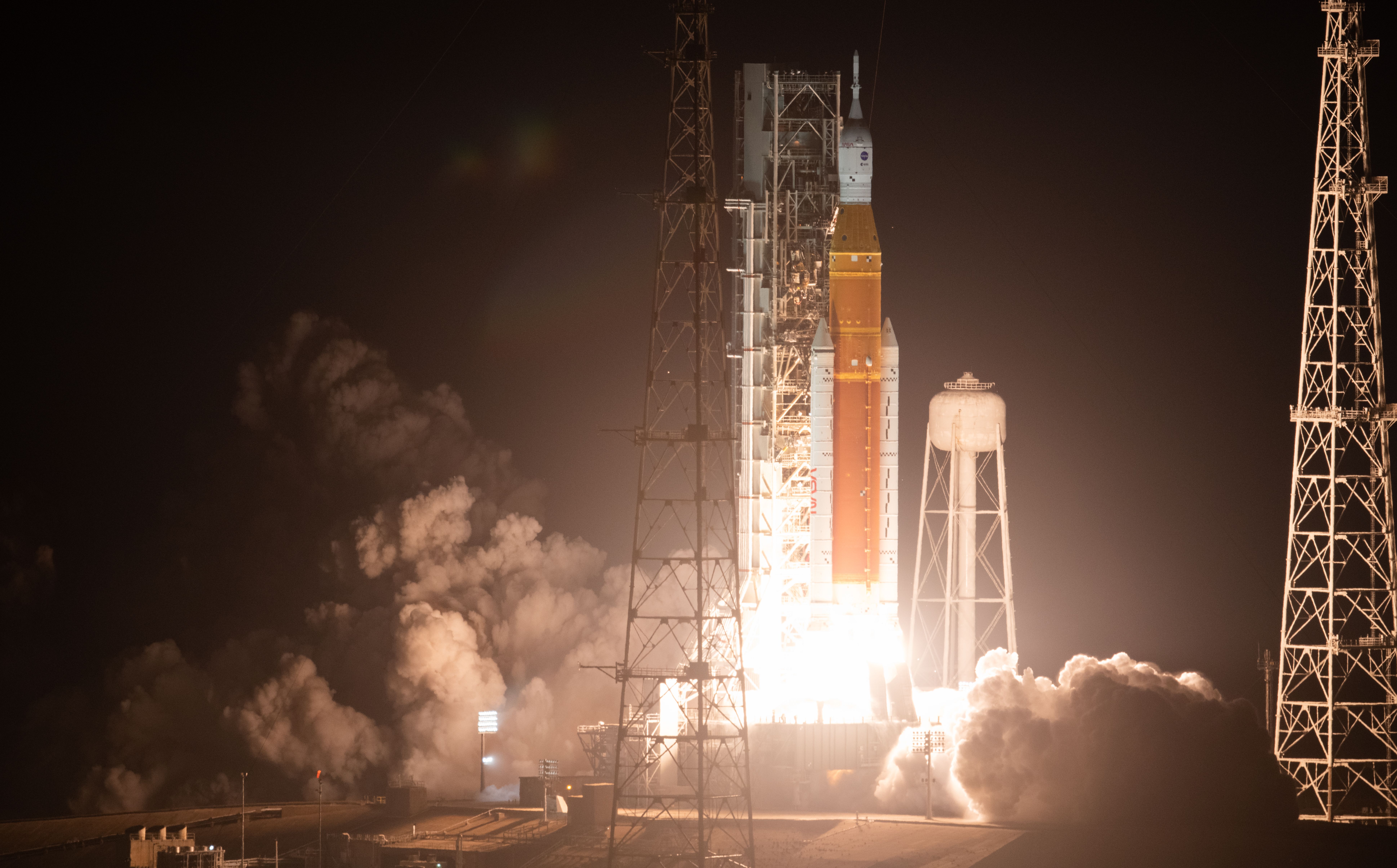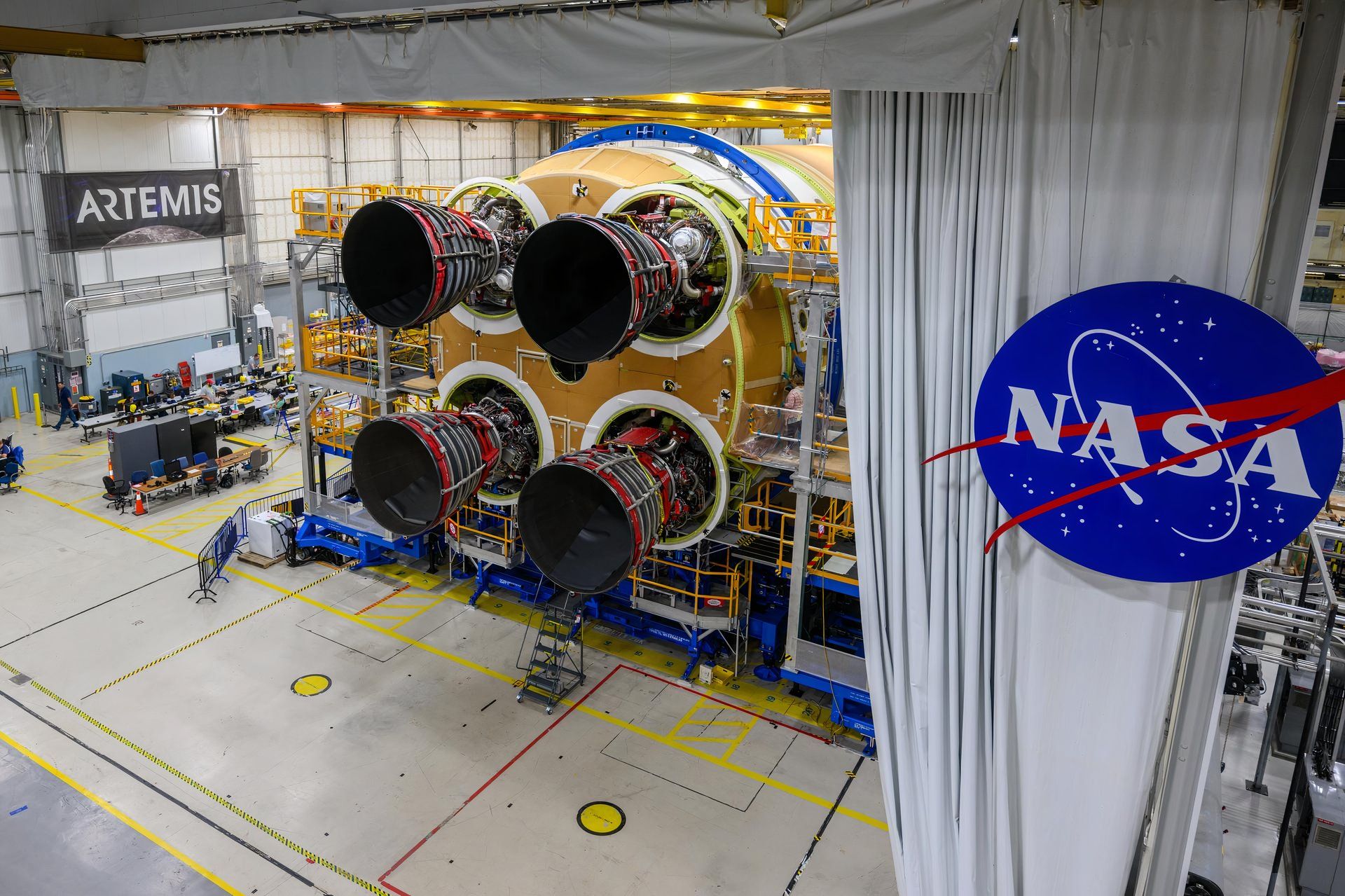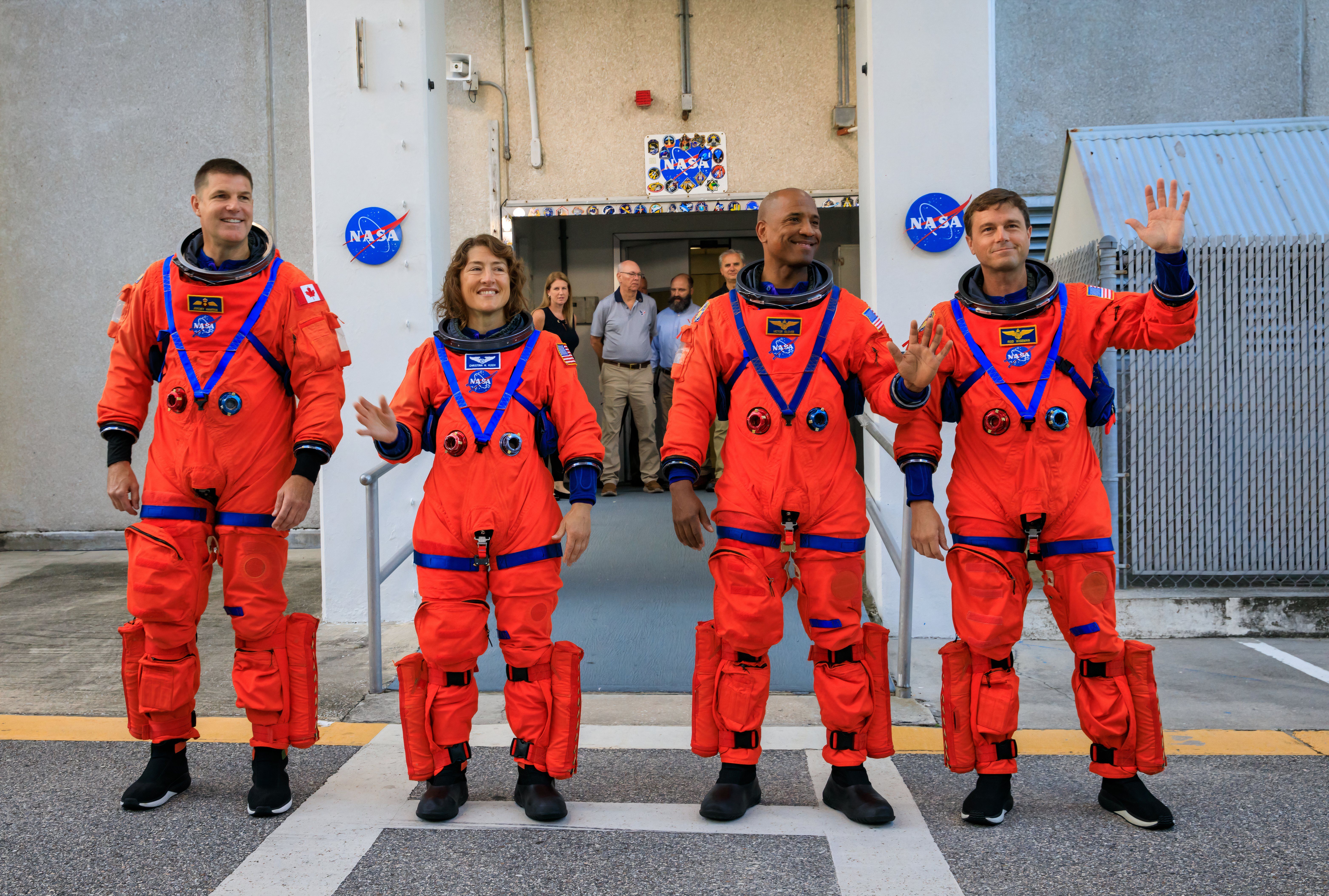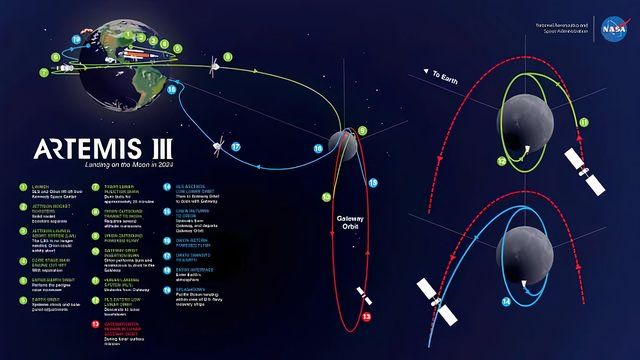NASA’s most ambitious lunar program is named after Artemis, the Greek goddess of hunting, wild nature, and the moon. The goddess was Apollo’s twin sister and the daughter of Zeus and Leto. She was widely worshiped at the Temple of Artemis at Ephesus, one of the Seven Wonders of the Ancient World.
The Artemis program follows up on the 1972
Apollo
17 mission and includes a Moon exploration plan with the declared long-term objective of sending a human-crewed expedition to Mars. It is managed by the National Aeronautics and Space Administration, NASA
which was responsible for the world’s first lunar landing with the Apollo 11 mission from July 16-24, 1969.
Artemis I Flight Test
Artemis I, a Space Launch System flight test, successfully launched from the
Kennedy Space Center
on November 2022 without a crew. The Orion spacecraft splashed down in the Pacific Ocean. The test came 50 years after NASA’s last Apollo 17 Moon landing.
Photo: Joel Kowsky | NASA
Artemis II is set to launch in September 2025
The four astronauts have been picked by the NASA Space Flight Program for a mission in 2025 to comprise the first crew to fly aboard its human deep space capabilities. The mission will test around the Moon to determine today’s human capability to explore deep space and set up long-term lunar surface exploration and science.
The European Service Module ESM for the mission was completed in 2023 and handed over to NASA in 2024. The ESM is a crucial component of the Orion spacecraft, providing essential resources such as electricity, water, oxygen, and nitrogen. The cylindrical module, four meters long, is unpressurized and includes the main engine, gas, and propellant tanks. An Adapter connects the module to the capsule where the astronauts are located.
Artemis II is NASA’s first mission with a crew aboard the Space Launch System SLS and Orion spacecraft. This mission will confirm that all the spacecraft systems operate as intended with the crew aboard in the real deep space environment. It will also lay the groundwork for missions to the moon’s surface, including the first woman and person of color, building long-term exploration abilities while inspiring a new generation of explorers.
In February 2024, NASA marked a critical milestone—20 uninterrupted years of presence on the International Space Station, which orbits low above Earth. The Agency’s Artemis lunar exploration program also lays the groundwork for human missions to
Mars
.
NASA’s partners Aerojet Rocketdyne and ![]() Boeing
Boeing
installed all four RS-25 engines onto the SLS rocket core stage for the Artemis II mission. The 212-foot-tall core stage, which includes two liquid propellant tanks and four RS-25 engines, will power the first crewed mission to the Moon. Once testing is complete and the hardware passes acceptance review, the core stage will be readied for shipment to Kennedy Space Center in Florida.
The crew of four astronauts will lift off on the approximately 10-day mission from the Launch Complex at NASA’s Space Center, blazing beyond Earth’s grasp atop the agency’s mega-Moon rocket. Over two days, they will check out Orion’s systems and perform a targeting demonstration test relatively close to Earth before beginning the journey toward the Moon.
Instead of using propulsion, it turns around and uses Earth’s gravitational pull and the Moon to send it back toward Earth. On the return, the astronauts will continue to assess the spacecraft’s systems until the crew members reenter Earth’s atmosphere at high speed, conducting a splashdown in the Pacific Ocean off the coast of San Diego. They will be met there by NASA and the Department of Defense recovery personnel.
“I have three of the finest human beings and outstanding astronauts that I’ve ever met.” —Reid Wiseman, NASA astronaut and commander of the Artemis II mission
The SLS core stage for Artemis II was delivered to Kennedy Space Center, and the Orion spacecraft was moved from the testing cell to the altitude chamber inside the Neil Armstrong Operations. Four astronauts, Commander Reid Wiseman, Pilot Victor J. Glover, Payload Specialist Christina Koch, and Mission Specialist Jeremy Hansen, will participate in the mission.
Artemis III will explore the South Pole of the moon
The most ambitious lunar program
NASA is set to launch Artemis III, a mission that builds on the crewed Artemis II flight test by adding new capabilities. The mission will be one of the most complex in deep space exploration history, exploring the lunar South Pole region. The astronauts’ observations, samples, and data collected will expand our understanding of our solar system and home planet while inspiring the upcoming Artemis Generation.
The mission will last approximately 30 days. Two crew members will descend to the Moon’s surface and spend a week near the South Pole before returning to Earth. The astronauts will wear spacesuits provided by Axiom Space, which helped NASA build a robust economy on the Moon by working with commercial service providers.
NASA is working with SpaceX to develop the Starship human landing system HLS for its Artemis missions. SpaceX launched the third integrated flight test of its Super Heavy booster and Starship upper stage, marking a significant milestone towards providing NASA with a Starship HLS for its Artemis missions.
Artemis IV: first lunar space station
NASA and its partners are developing the foundational systems for long-term exploration of the Moon through their Artemis campaign. Following the Artemis III mission, astronauts on Artemis IV will live and work on humanity’s first lunar space station, Gateway, enabling new opportunities for science and preparation for human missions to Mars.
Gateway’s oval-shaped orbit passes over both the North and South Pole areas of the Moon, providing unparalleled opportunities for science and access to the lunar surface. Engineers will connect its first two modules — the Power and Propulsion Element (PPE) built by Maxar and the Habitation and Logistics Outpost HALO built by Northrop Grumman
— for launch aboard a
SpaceX Falcon
Heavy rocket.
Gateway will include docking ports for various visiting spacecraft, space for the crew to live, work, and prepare for lunar surface missions, and instruments for science investigations to study heliophysics, human health, and life sciences. Multiple scientific instruments will provide data on radiation during transit and while Gateway is in lunar orbit.
Exploration and use of the moon, Mars, Comets, and Asteroids for international peace
NASA is leading the Artemis campaign to land international partner astronauts on the Moon, where they will make scientific discoveries and explore its surface. International partnerships are crucial for a sustainable presence and preparation for the first human mission to Mars.
Launched in October 2020, the Artemis Accords were signed by 43 countries, including the United States, Australia, Canada, Italy, Japan, Luxembourg, the United Arab Emirates, the United Kingdom, and the United States. The Accords are a set of principles aimed at promoting peaceful and responsible practices in the exploration and use of outer space.
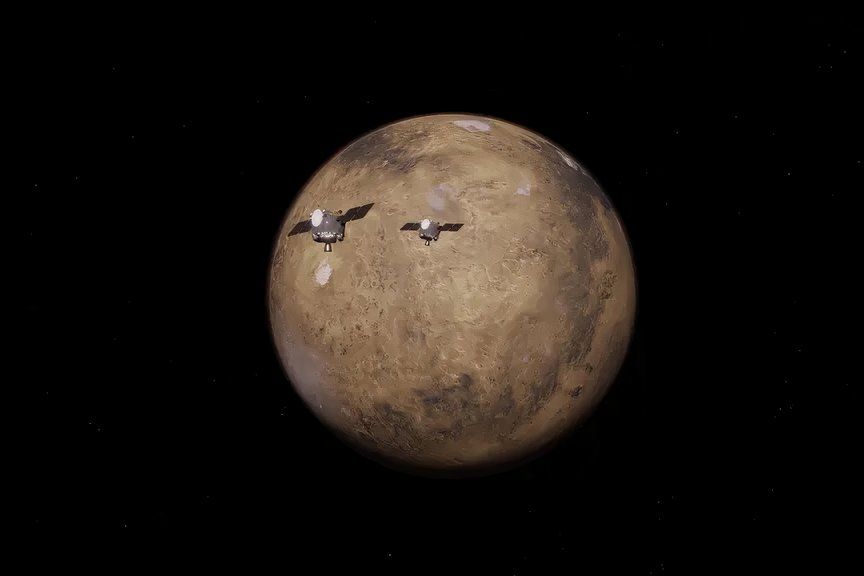
Delayed Blue Origin ESCAPADE Mission To Mars: What Is Happening At NASA?
NASA announced it won’t fuel the two ESCAPADE (Escape and Plasma Acceleration and Dynamics Explorers) spacecraft, which means the mission will miss its October launch window.
The ESCAPADE mission will use two identical spacecraft to conduct climate studies on the Red Planet. Specifically, they will examine “how solar wind interacts with Mars’ magnetic environment, driving the planet’s atmospheric escape.”
The US space agency explained the decision to stand down based on a joint review of launch preparations between Blue Origin, the Federal Aviation Administration, Space Launch Delta 45 Range Safety Organization, and NASA’s Launch Services Program and Science Mission Directorate. According to NASA, standing down “will avoid significant cost, schedule, and technical challenges associated with potentially removing fuel from the spacecraft in the event of a launch delay.”
For now, NASA says future launch opportunities are under review. Because success depends on a specific alignment be

